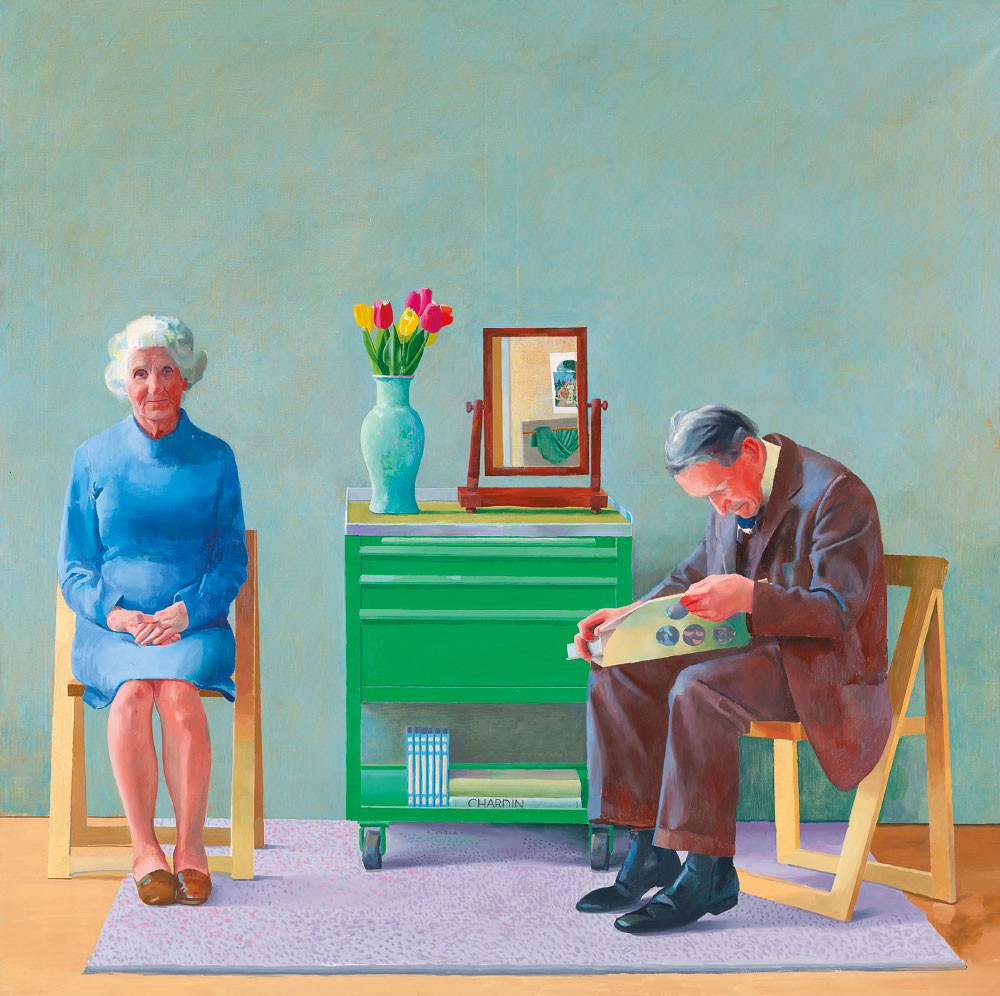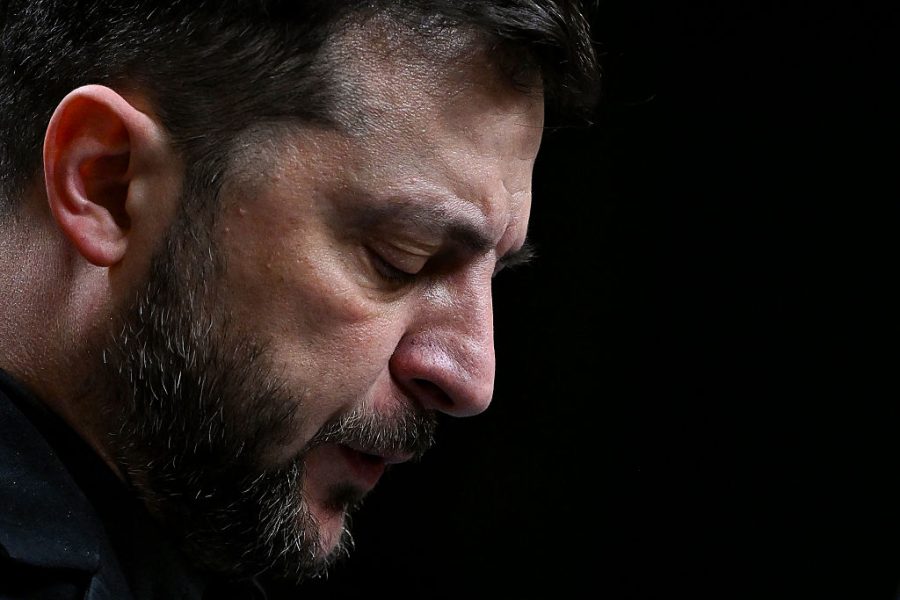The lunatics were once in charge of the asylum. The first six directors of the National Gallery were all artists: before art history became an academic discipline, artists were the leading authorities on art.
Founded more as a teaching resource than a visitor attraction, until the mid-1940s the gallery was reserved for artists two days a week, when other visitors had to pay for entry. This stopped them getting in the way of artists copying from the masters, an essential part of an art education in the days before cheap colour reproduction.
There’s something of the altarpiece in this image of an artist’s progenitors flanking a touchstone for his art
It’s rare to see artists copying in the galleries now that they are so jam-packed with tourists. As long ago as 1980, David Hockney wrote to the then director Michael Levey asking permission to copy a Van Gogh in the basement, as to be ‘stood in the N.G. every morning would be hard for me – people would natter to me’. Copying, he argued, was ‘a marvellous way to learn, it was good enough for Degas, Van Gogh and almost everybody else before 1920’.
The request was part of a correspondence about his 1981 Artist’s Eye exhibition, the fifth in a series designed to take the institution back to its roots by inviting living artists to hang a selection of their own works alongside favourite paintings from the collection. Hockney’s selection was decided in advance. Four years earlier he had painted a portrait of his friend Henry Geldzahler, curator of contemporary art at the Met, studying reproductions of four of the artist’s favourite National Gallery paintings taped to a screen in his studio. Titled ‘Looking at Pictures on a Screen’ (1977), the work testified to Hockney’s belief in the power of great painting of all periods to continue to ‘give off a lot of its magic’ even in reproduction. He suggested hanging the original four paintings – Vermeer’s ‘A Young Woman Standing at a Virginal’ (c.1670-2), Piero della Francesca’s ‘The Baptism of Christ’ (c.1437-45), Van Gogh’s ‘Sunflowers’ (1889) and Degas’s ‘After the Bath’ (1890-5) – alongside this picture, and Levey jumped at the idea. Being Hockney, he didn’t stop at that. A generation before social media, he introduced an interactive element by including the original screen and chair belonging to his former partner Peter Schlesinger – specially shipped from New York – so that visitors could stand in Geldzahler’s place. Now that painting – without the screen and chair – is back at the National Gallery, reunited with Piero’s ‘Baptism’ in a special display. Hockney has ‘never fallen out of love with Piero’ since he was given a little three and sixpenny book on the artist as a student, before encountering his paintings in the flesh on his first trip to the capital aged 18. He loves the quattrocento artist’s ‘clarity of light’ and his way of positioning figures in structured spaces so that ‘you could measure where all the figures are’. Piero, who shared Hockney’s fascination with geometry and optics, wrote the earliest manual on perspective in painting, De Prospectiva Pingendi, in the 1470s. Apart from the title, it was in the vernacular: originally headed for a career in the family leather business, the young Piero never learned Latin. Like Hockney’s, his way of writing about art was accessible and jargon-free.
‘Looking at Pictures on a Screen’ emulates the spatial structure and clarity of a Piero painting. The pointilliste treatment of the pink screen makes its oil colours shimmer like tempera, while the green of the wall behind is picked up in the lighted tip of Geldzahler’s bow tie and reflected in the nacreous sheen of his white linen suit, echoing the greenish shadows in Christ’s flesh tones – ‘The Baptism’ was painted on a green ground. The complementary red and green intertwine in the little chair, its trellis-patterned upholstery artfully reflected in the polished wooden floor.
On loan from an American private collection, ‘Looking at Pictures’ is a luminous piece of painting. It hangs to the left of ‘The Baptism’, with ‘My Parents’ (1977), painted the same year, on the other side (see below). In two earlier failed attempts at painting his parents Hockney had included his self-portrait in the mirror between them, but here the mirror catches reflections of Piero’s ‘Baptism’ and a swag of Fra Angelico curtain he had used to frame the earlier double portrait. Hockney’s mother Laura kept a reproduction of ‘The Baptism’ he had given her on her bedroom wall because she liked its religious subject, and there’s something of the altarpiece in this image of an artist’s progenitors flanking a historical touchstone for his art. A Chardin catalogue and an English edition of Proust’s Remembrance of Things Past on the shelf below underline the continuity of past and present. ‘If paintings speak to you, it’s happening now,’ says Hockney in the catalogue. ‘So they are contemporary. They are living. The artist might have died but the pictures are still alive.’ The lesson of this little exhibition is that great art speaks to each new generation in the present tense.








Comments